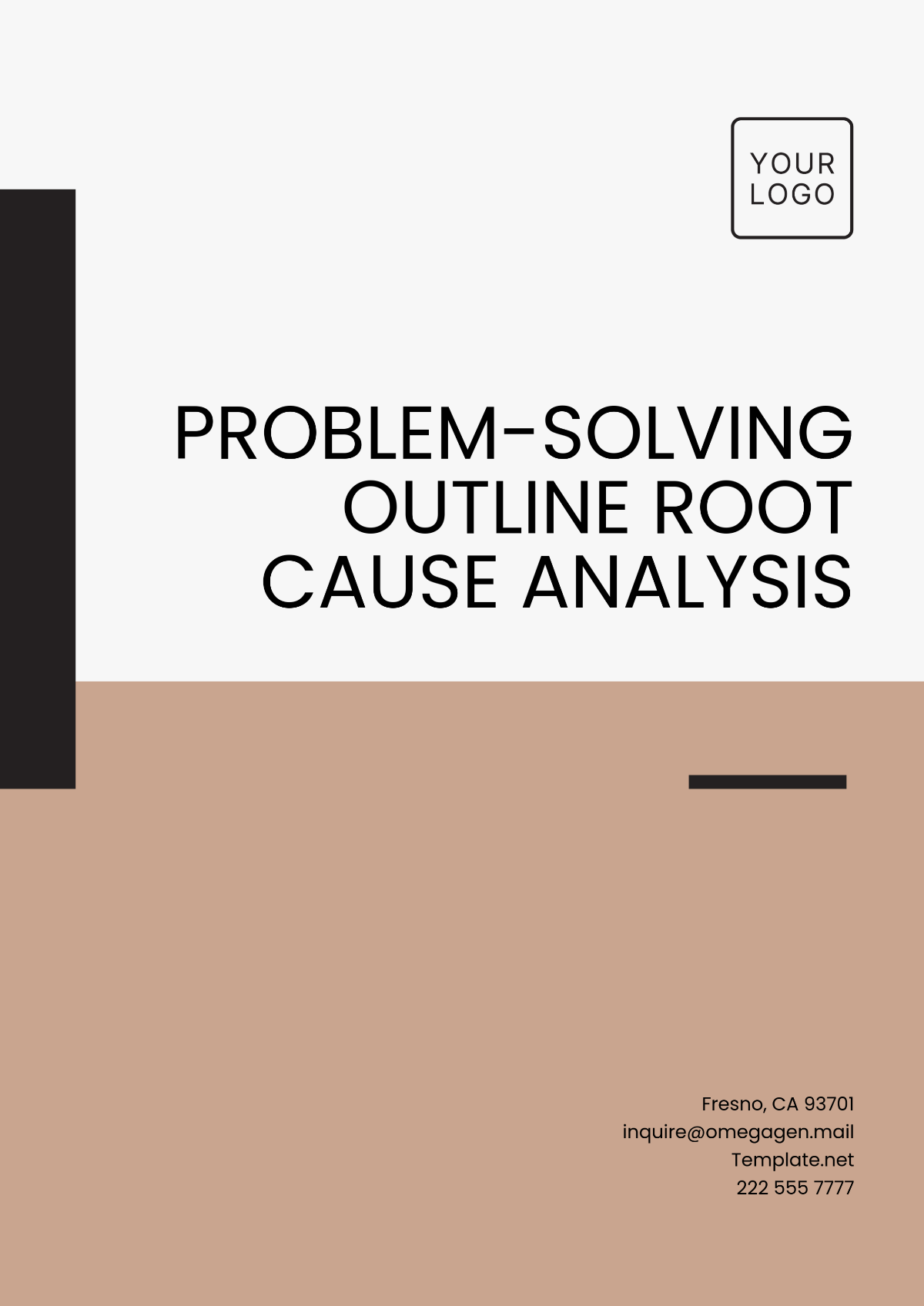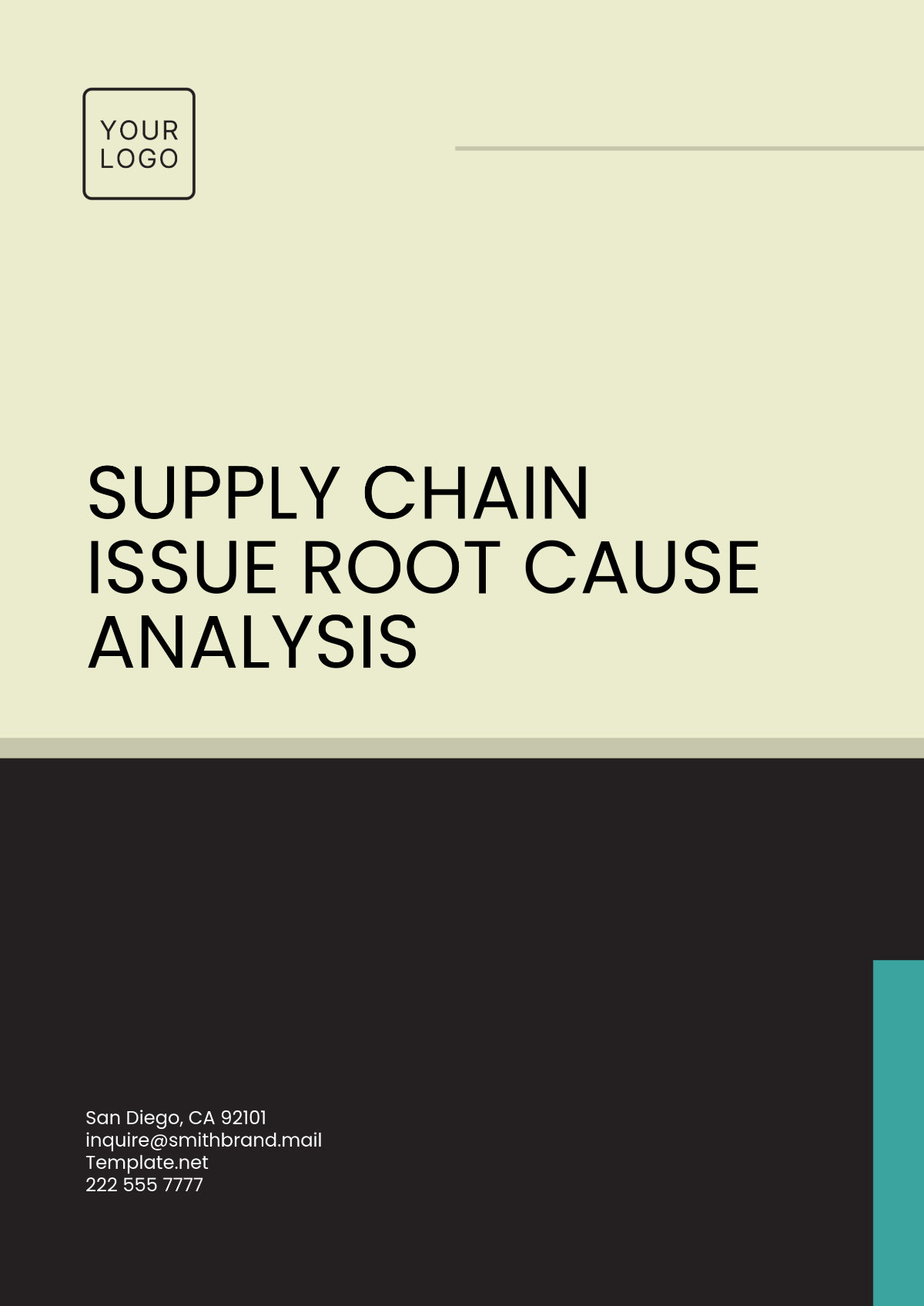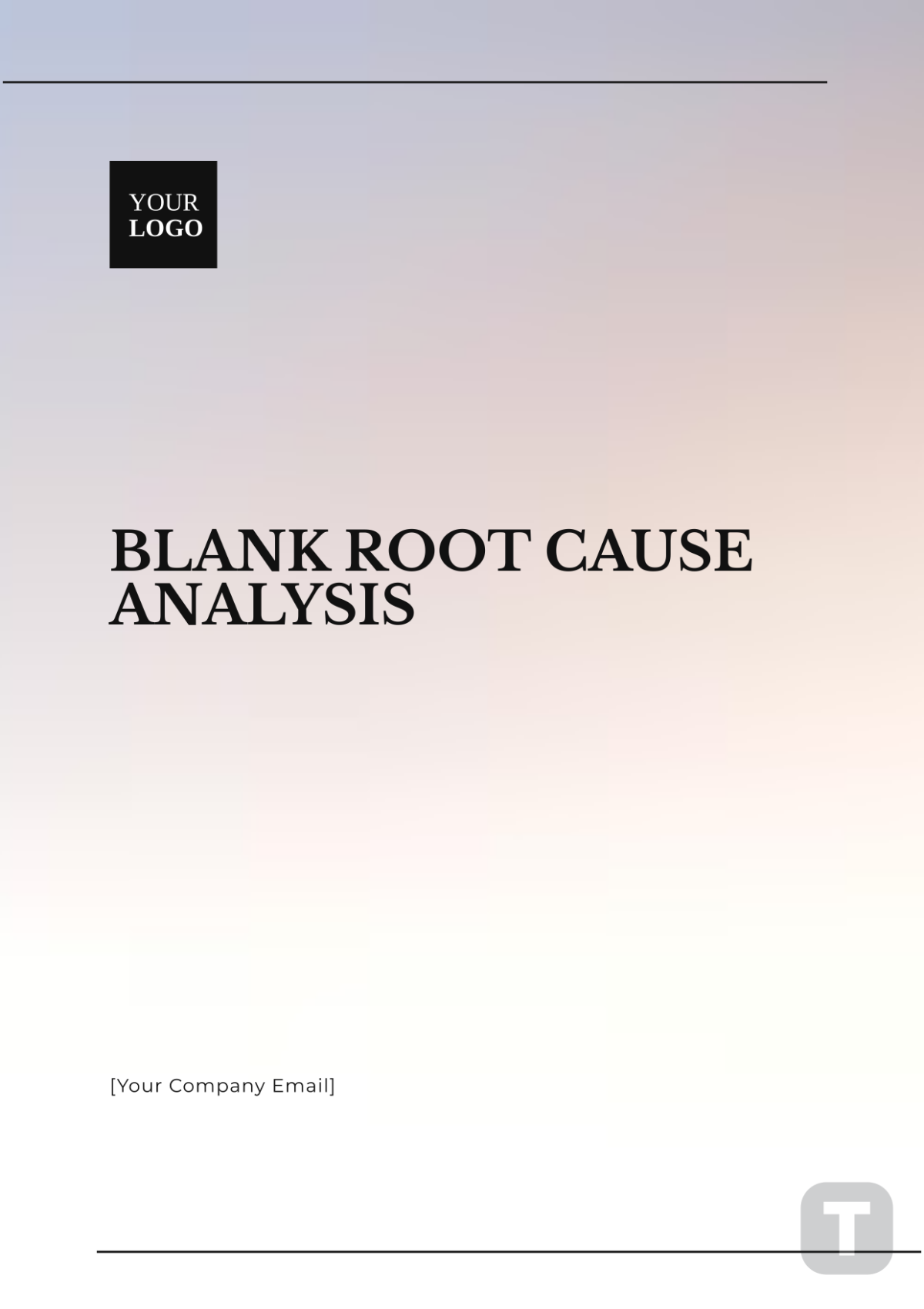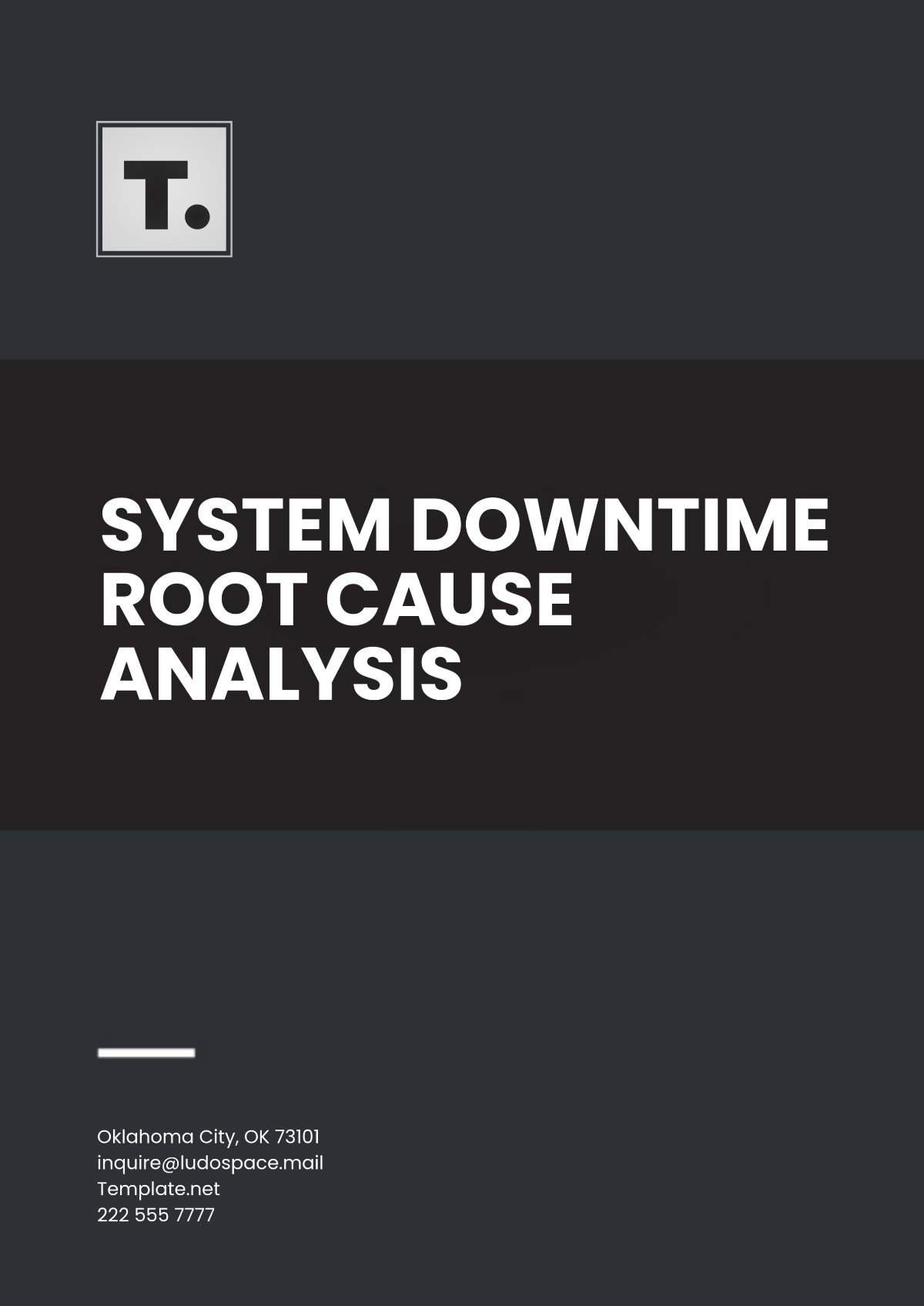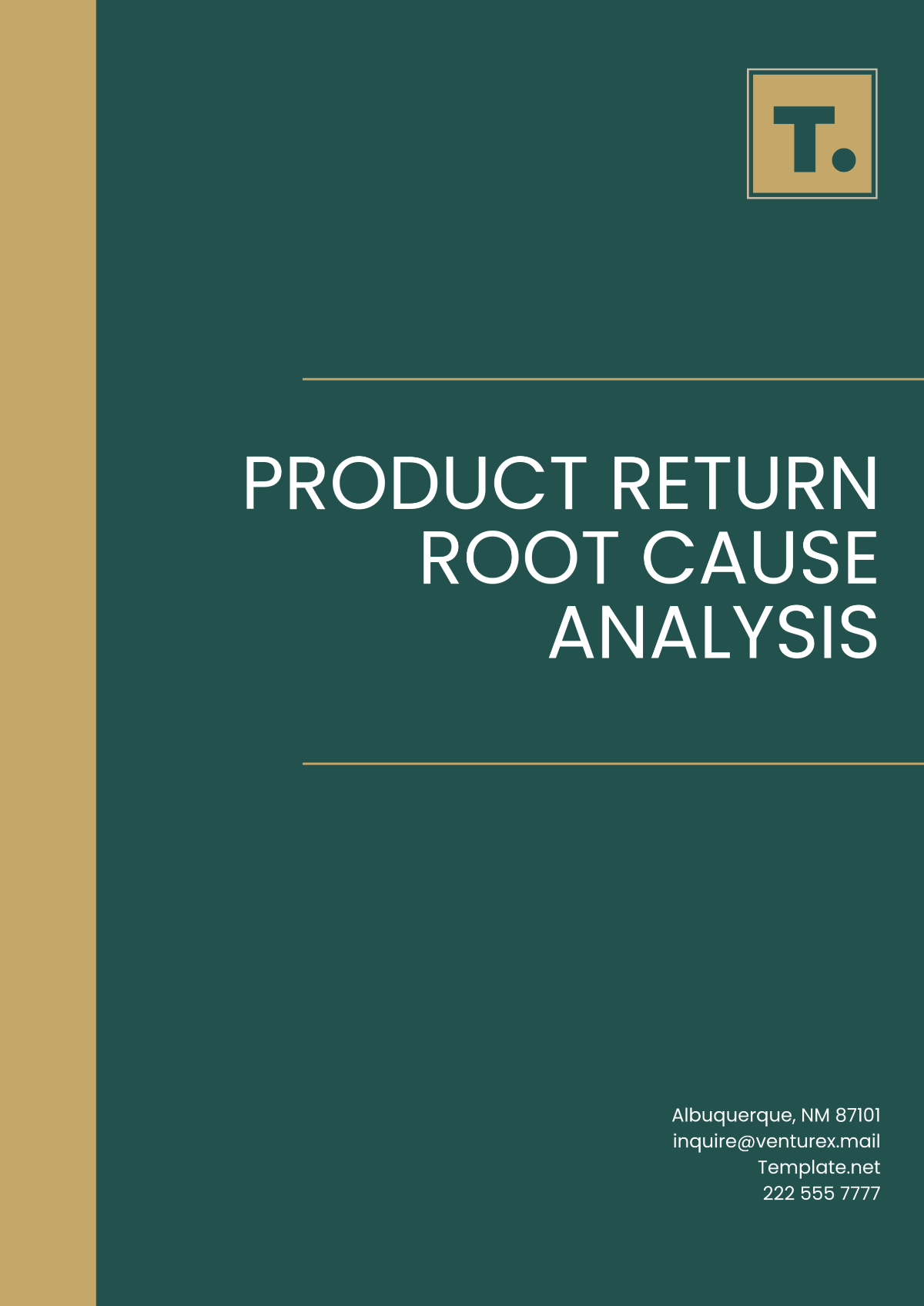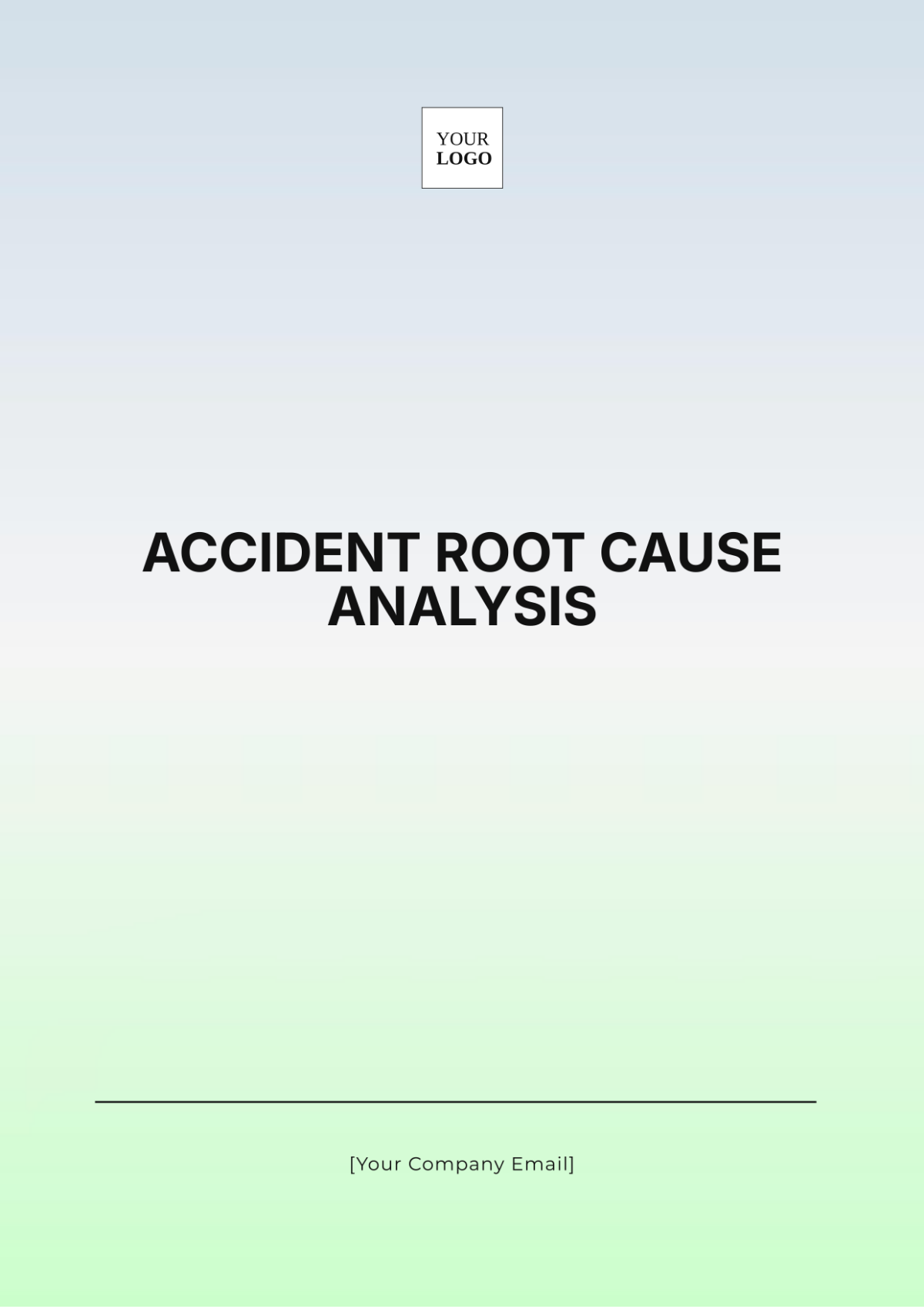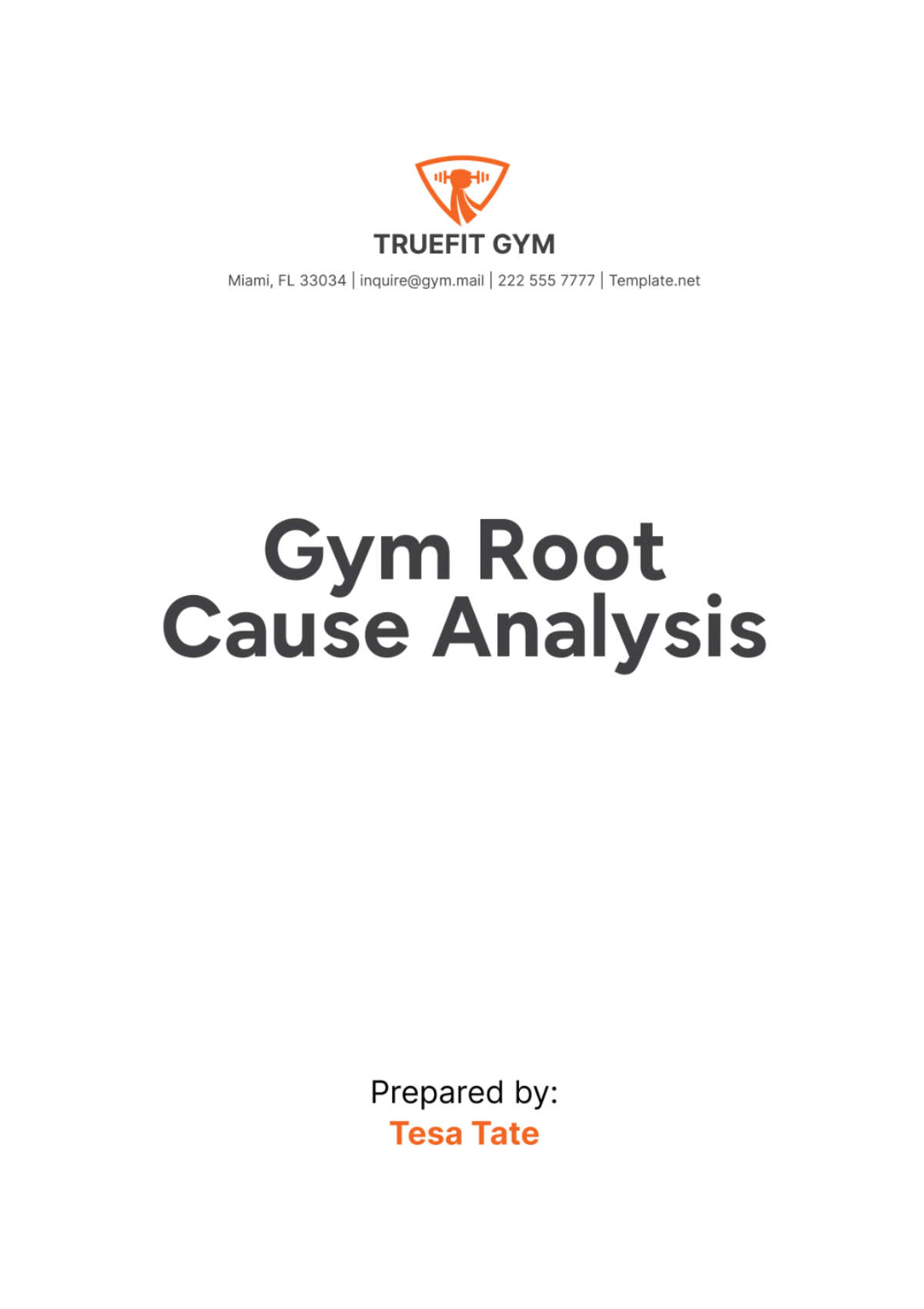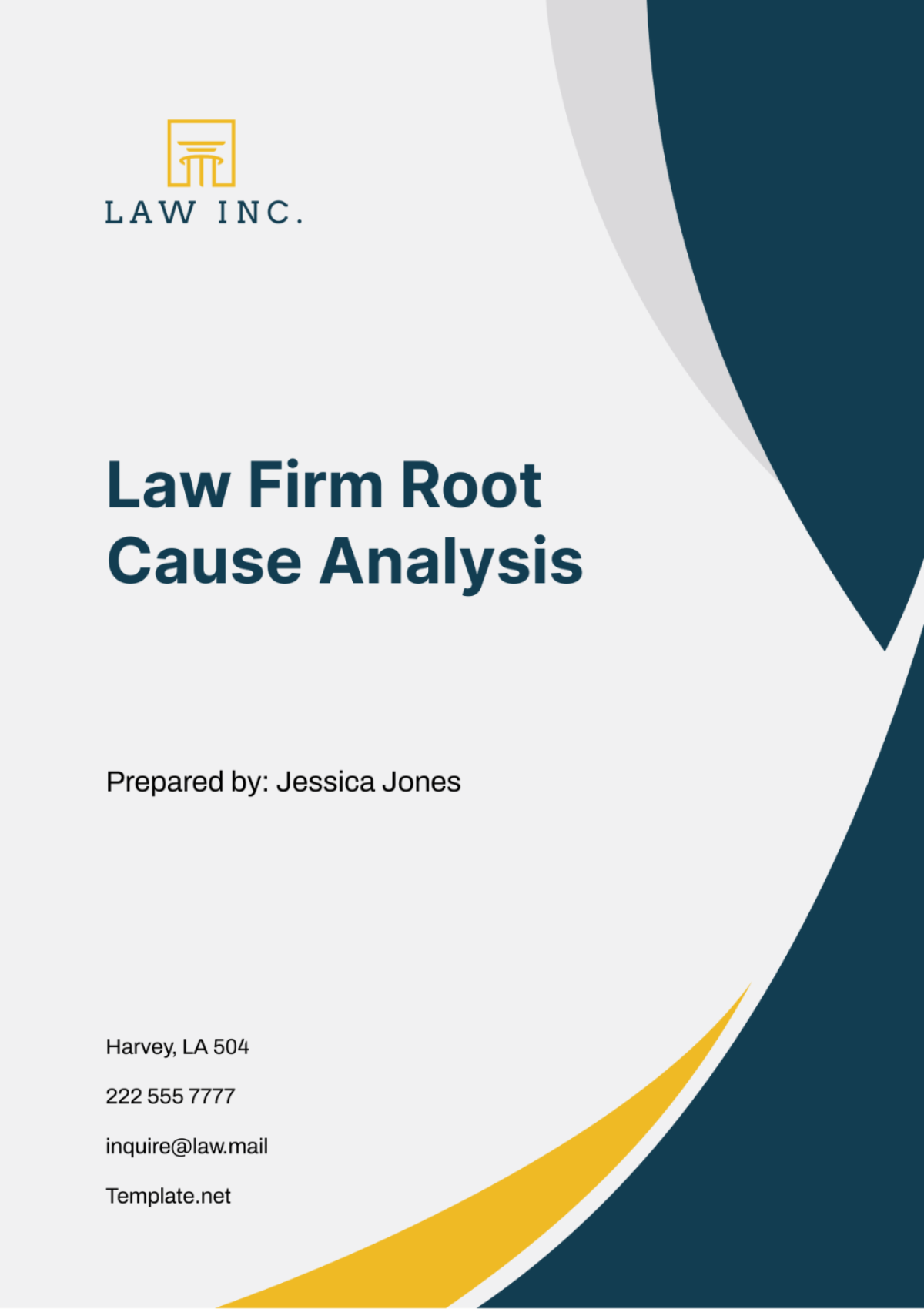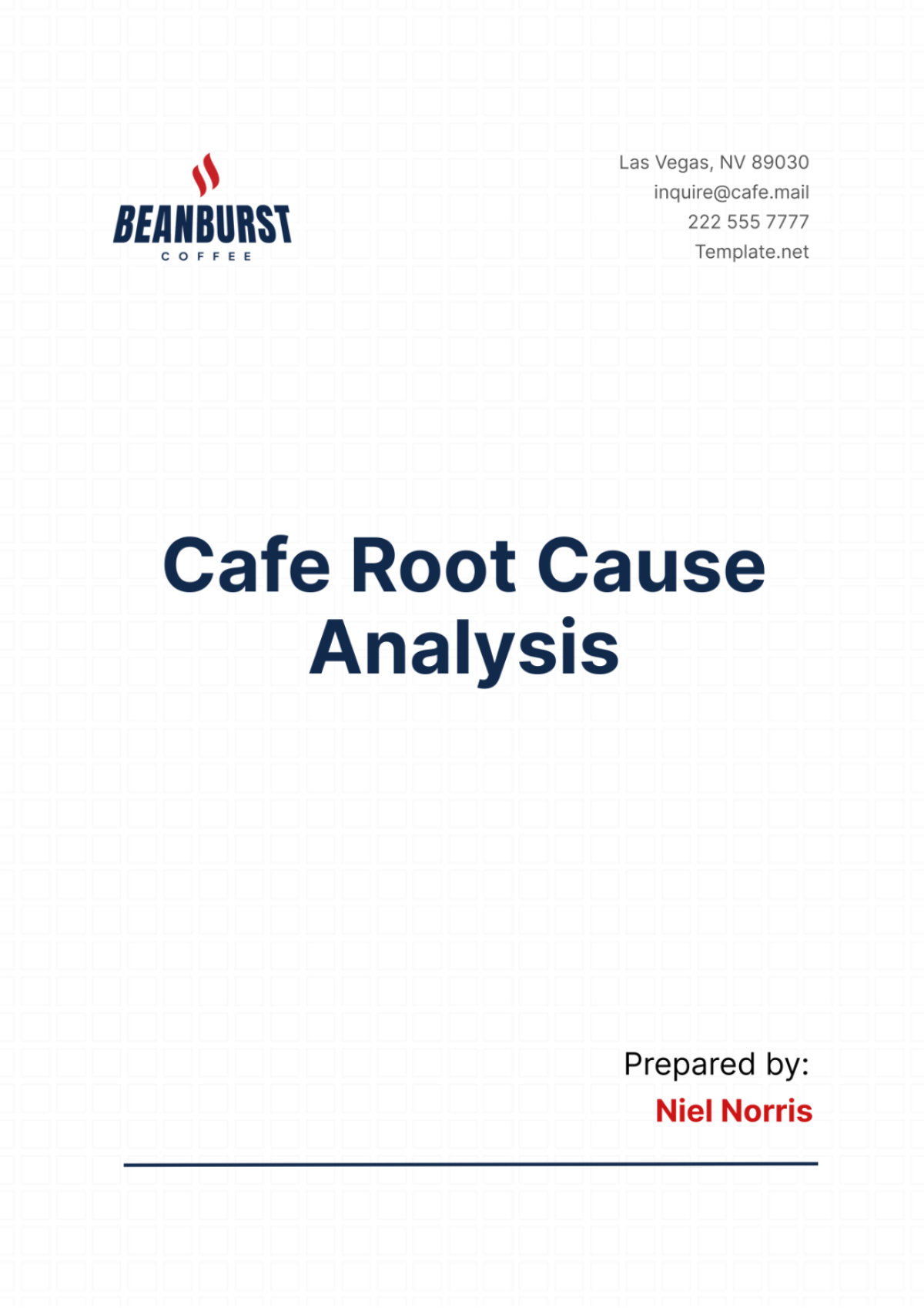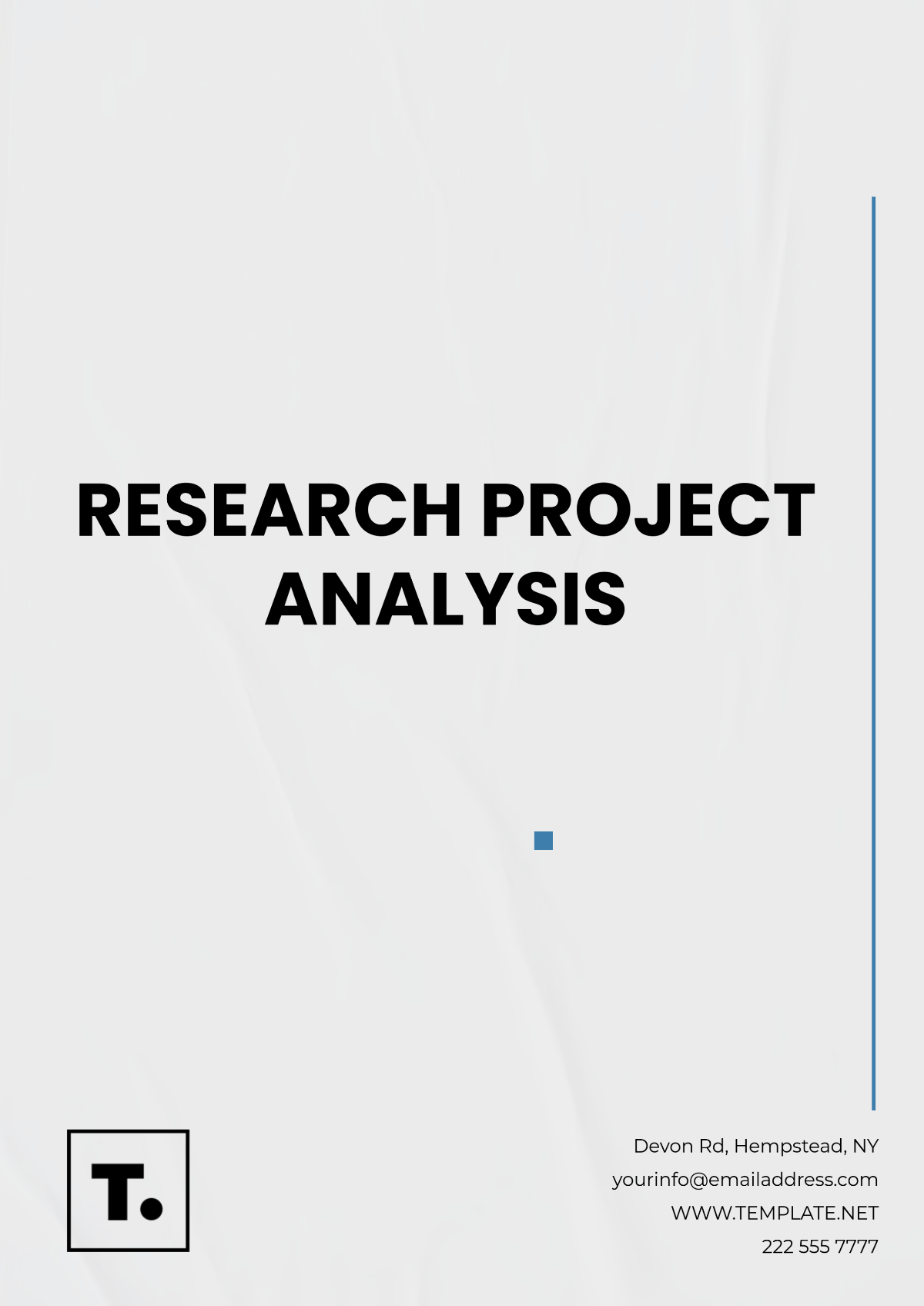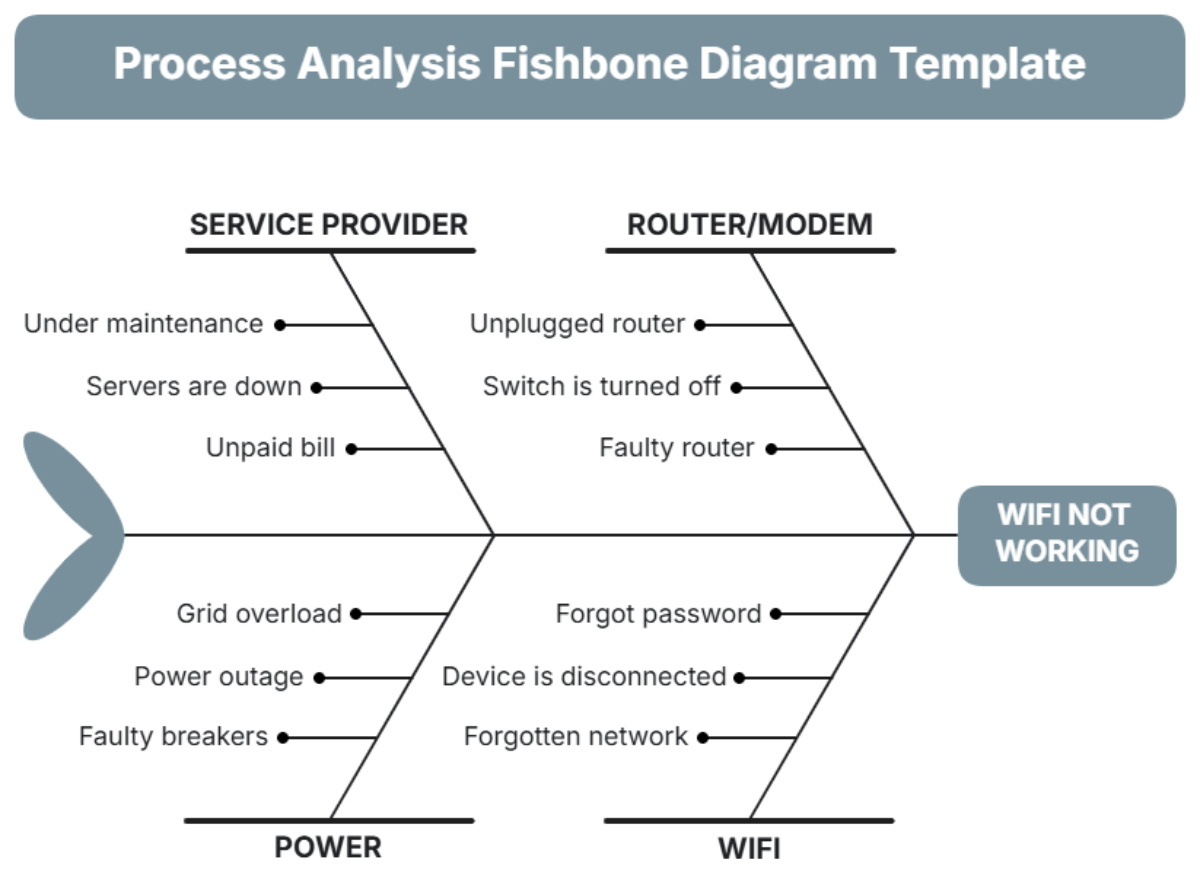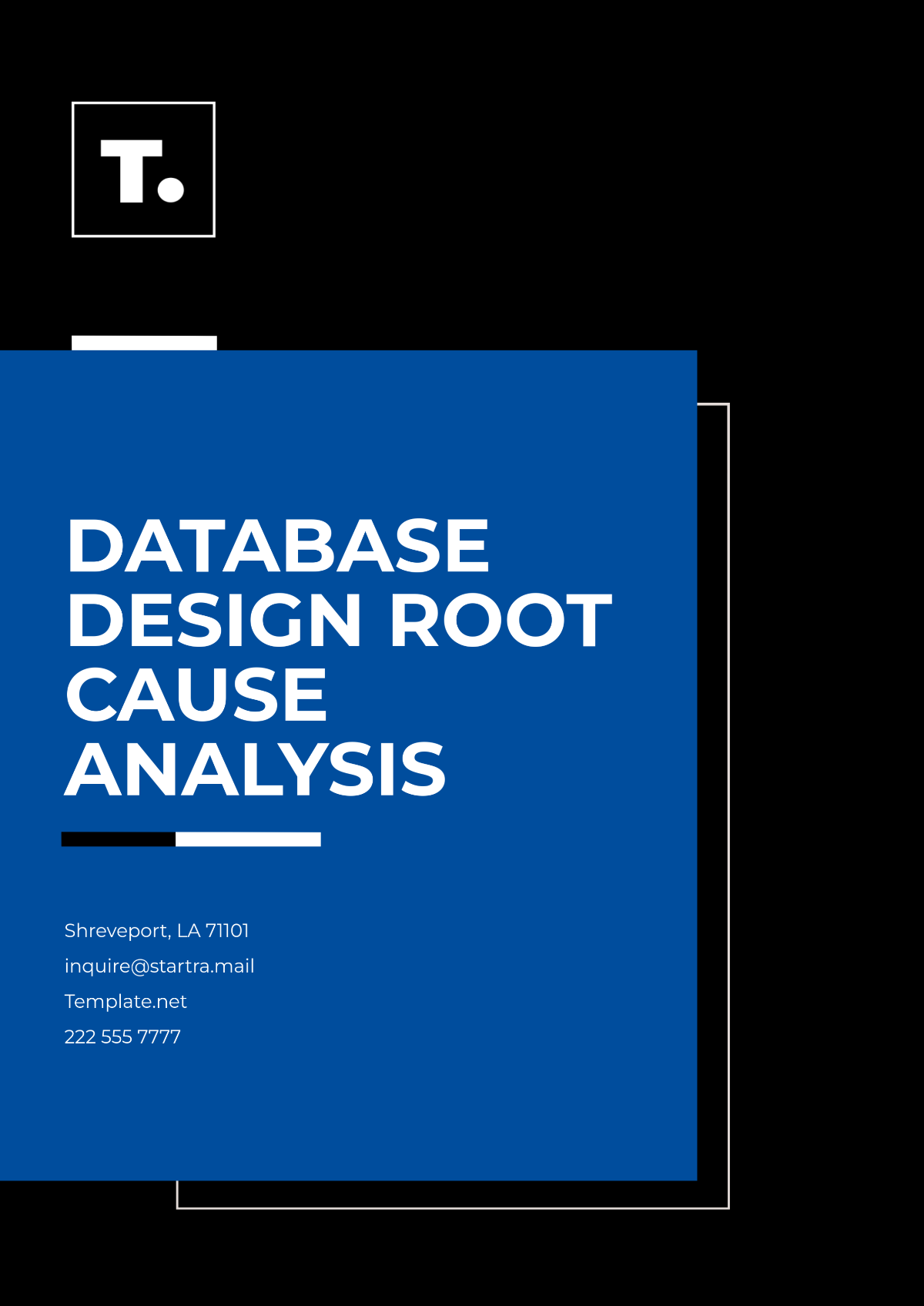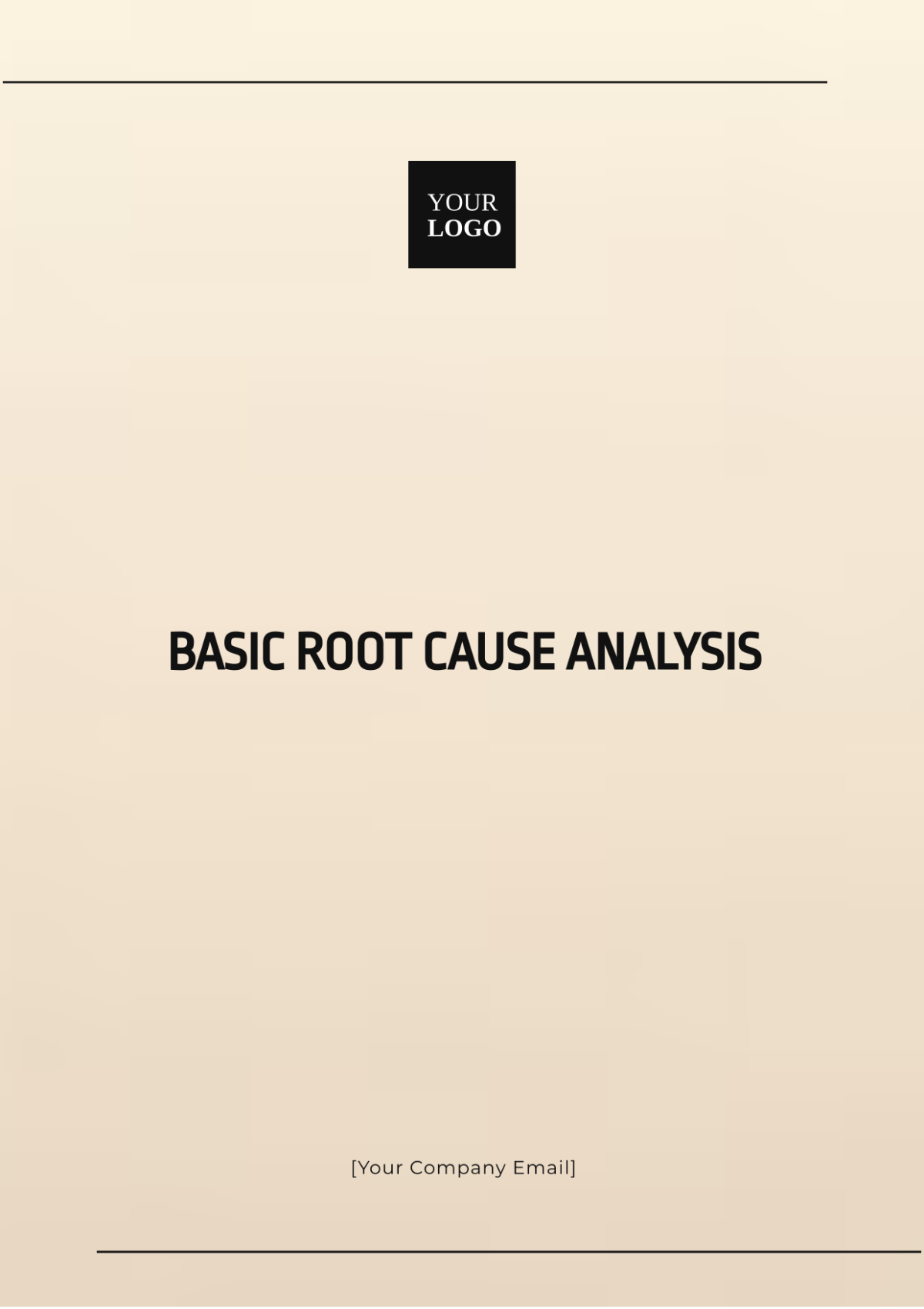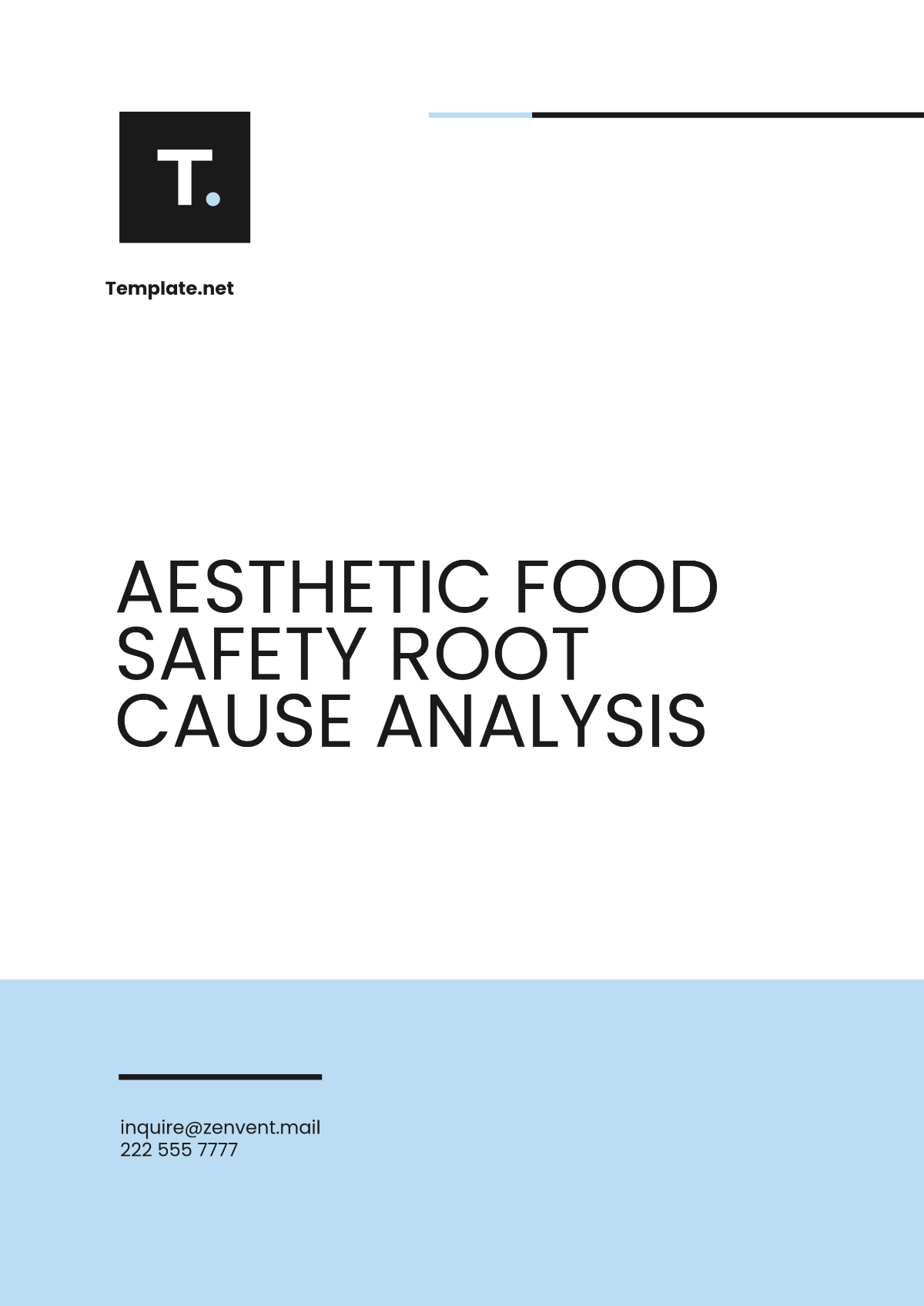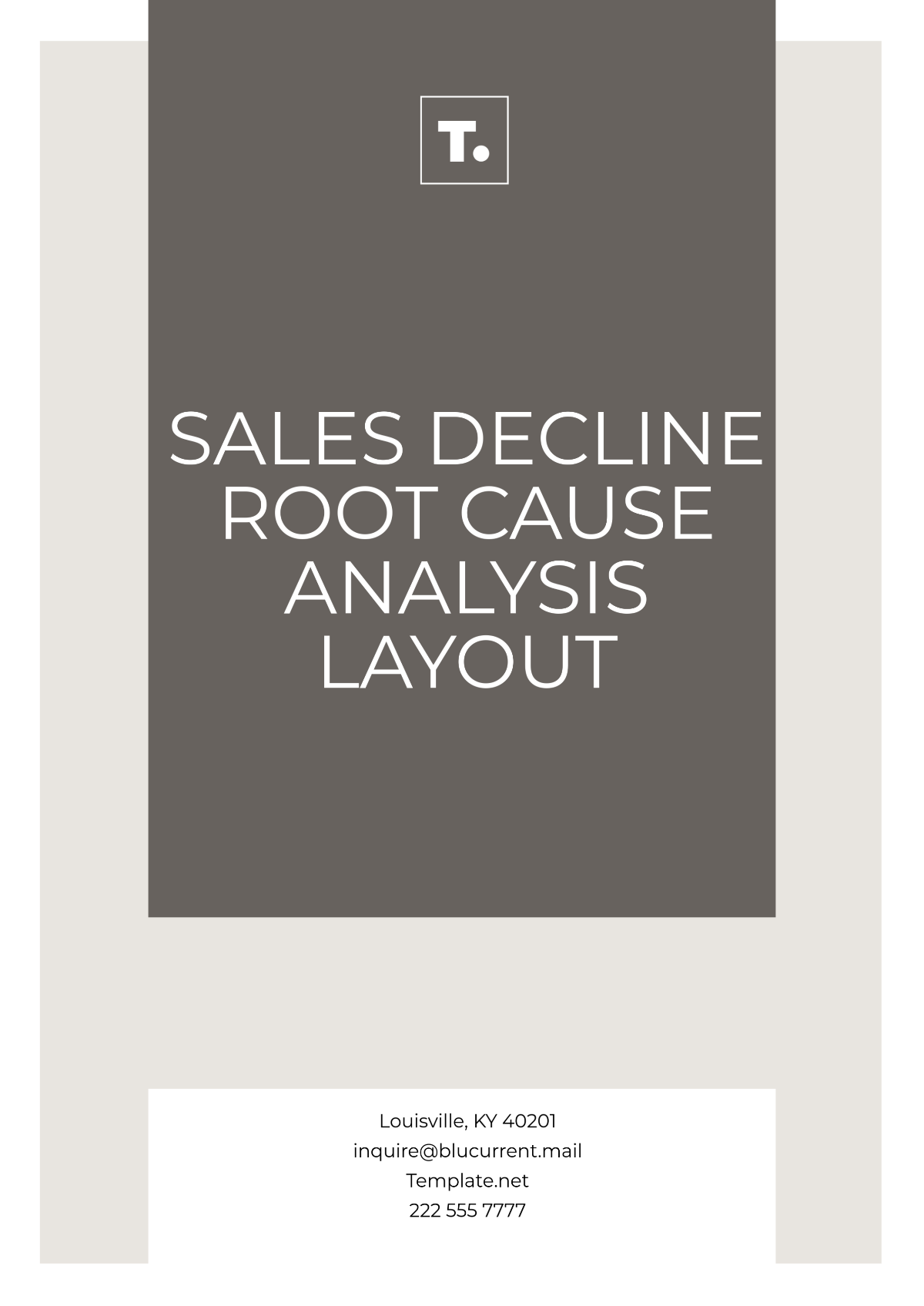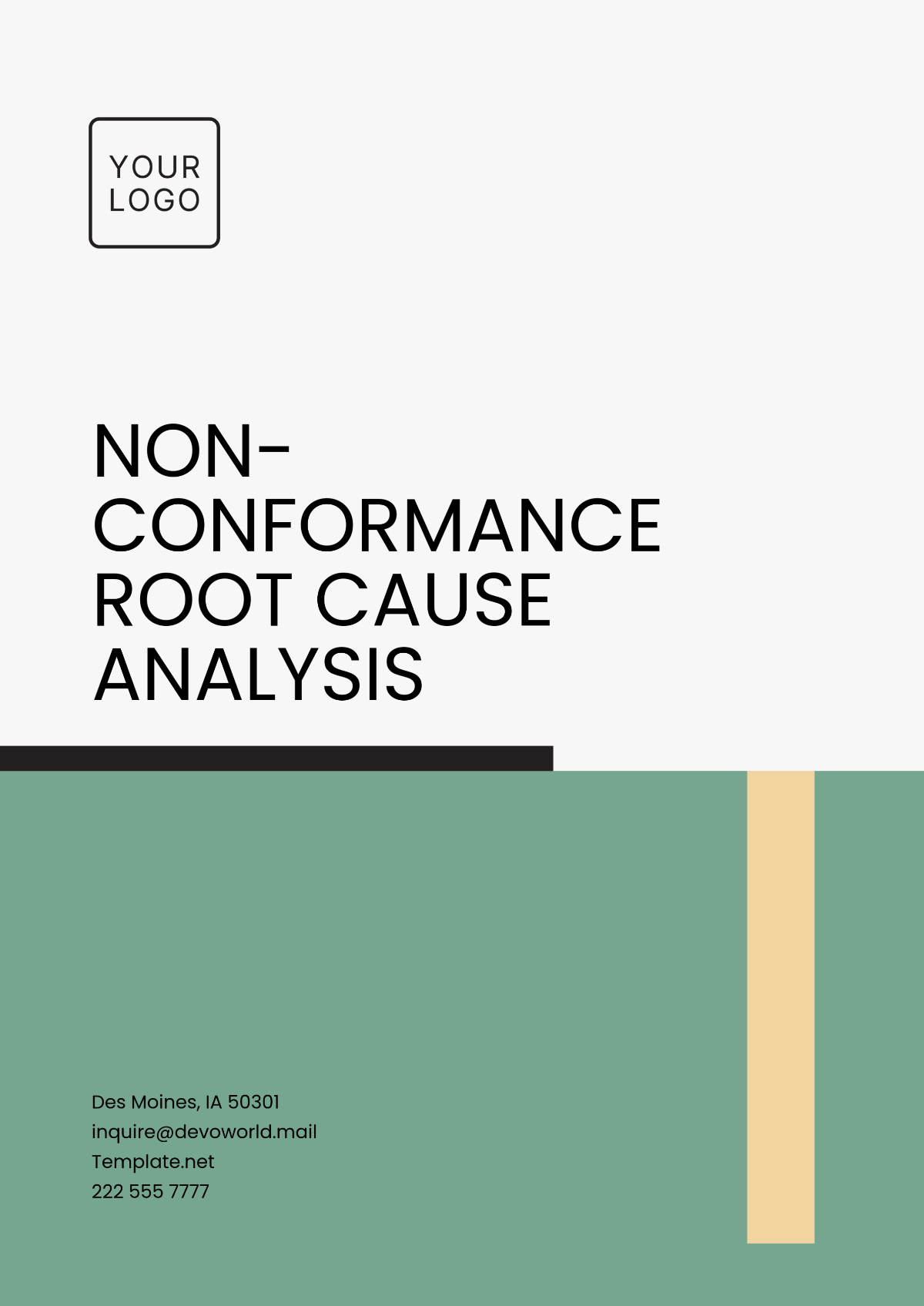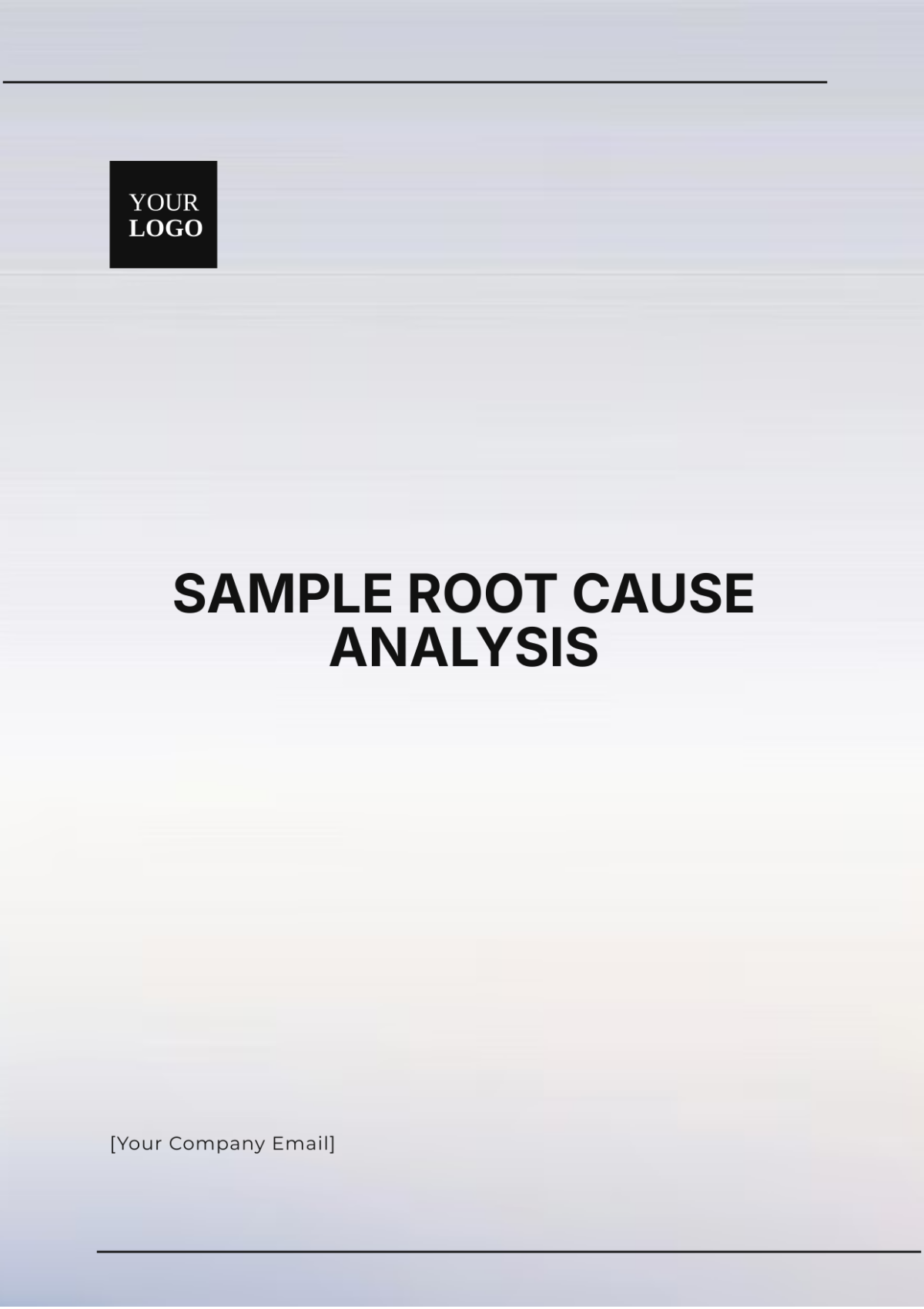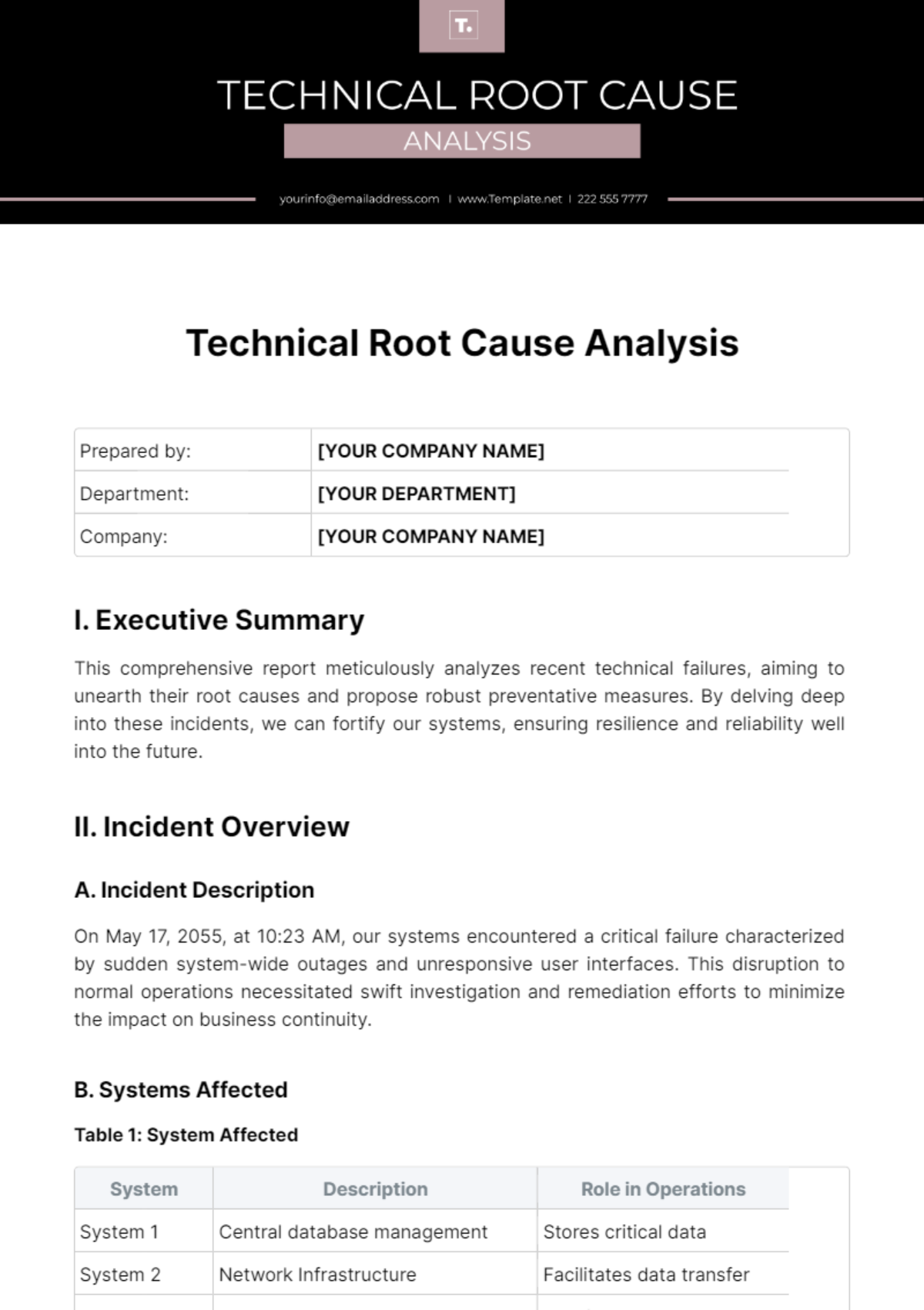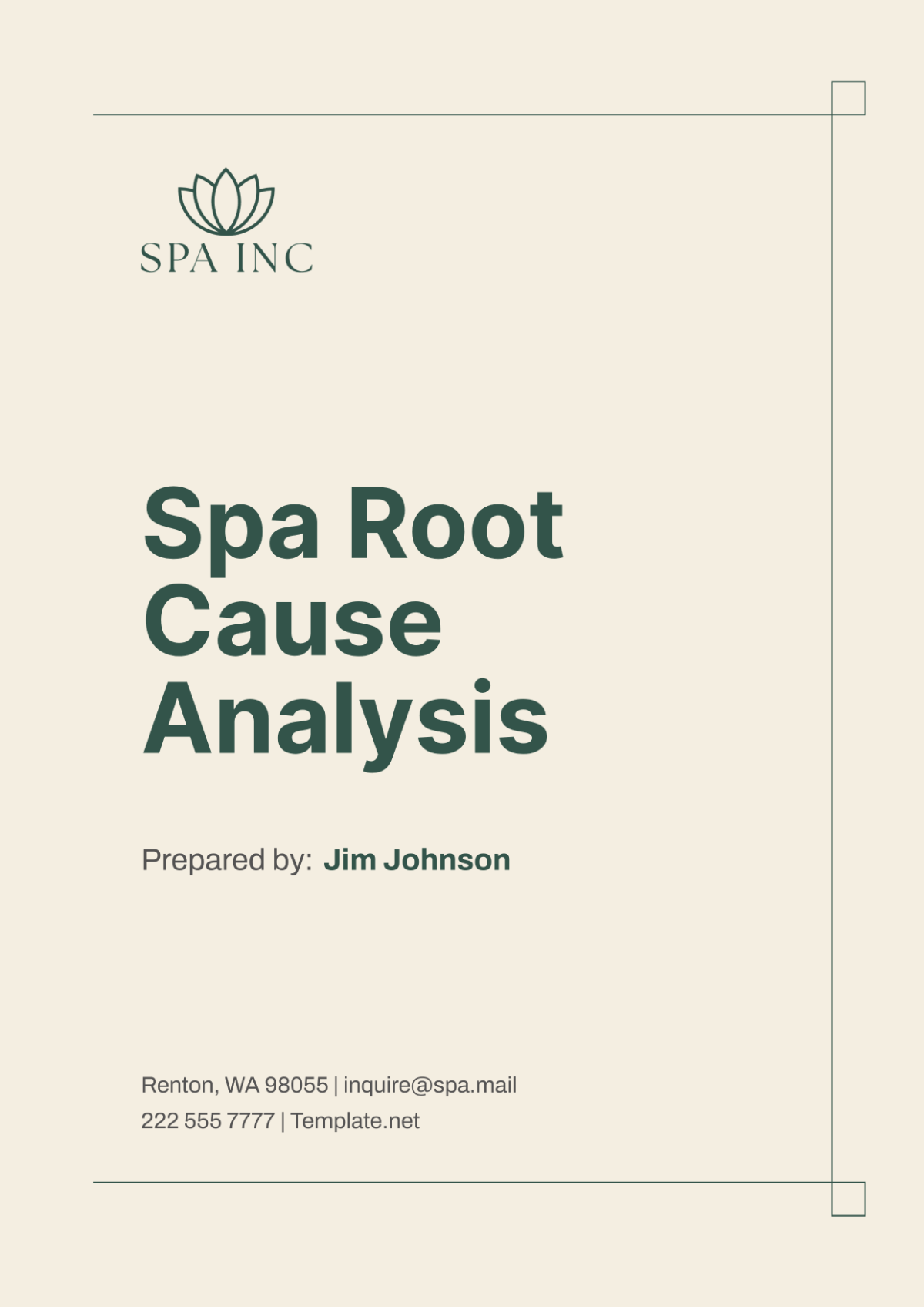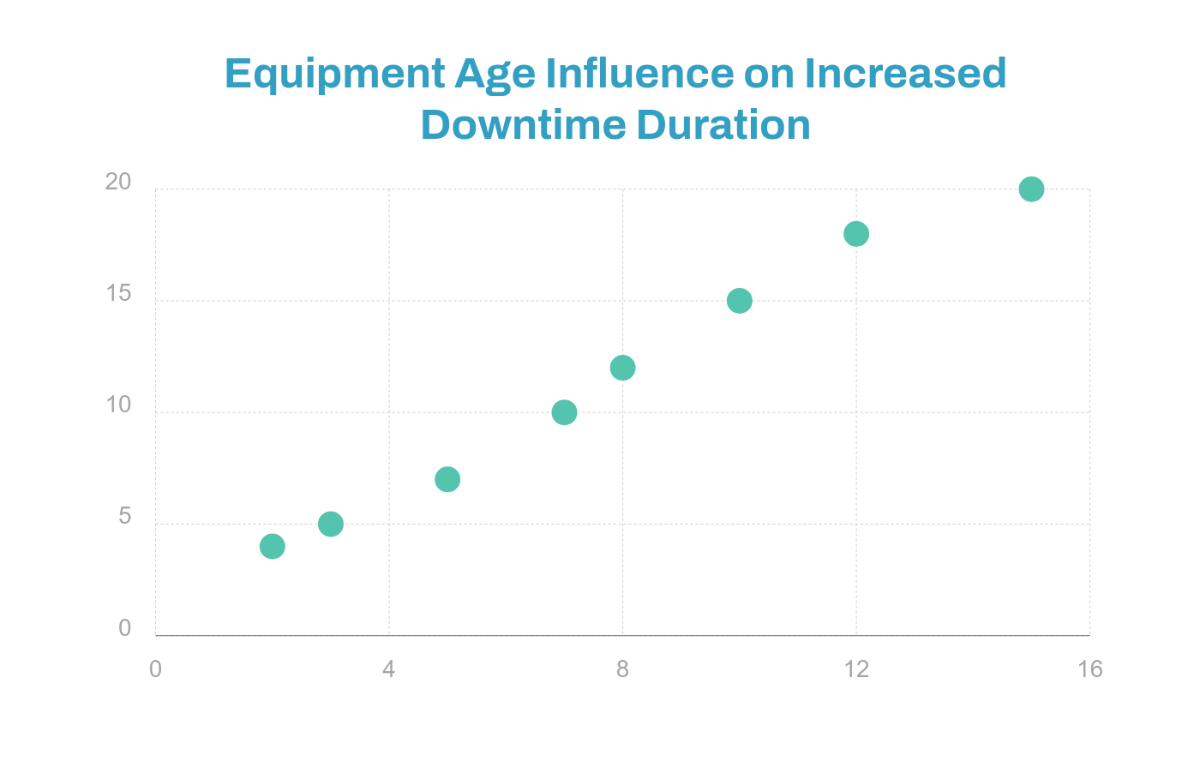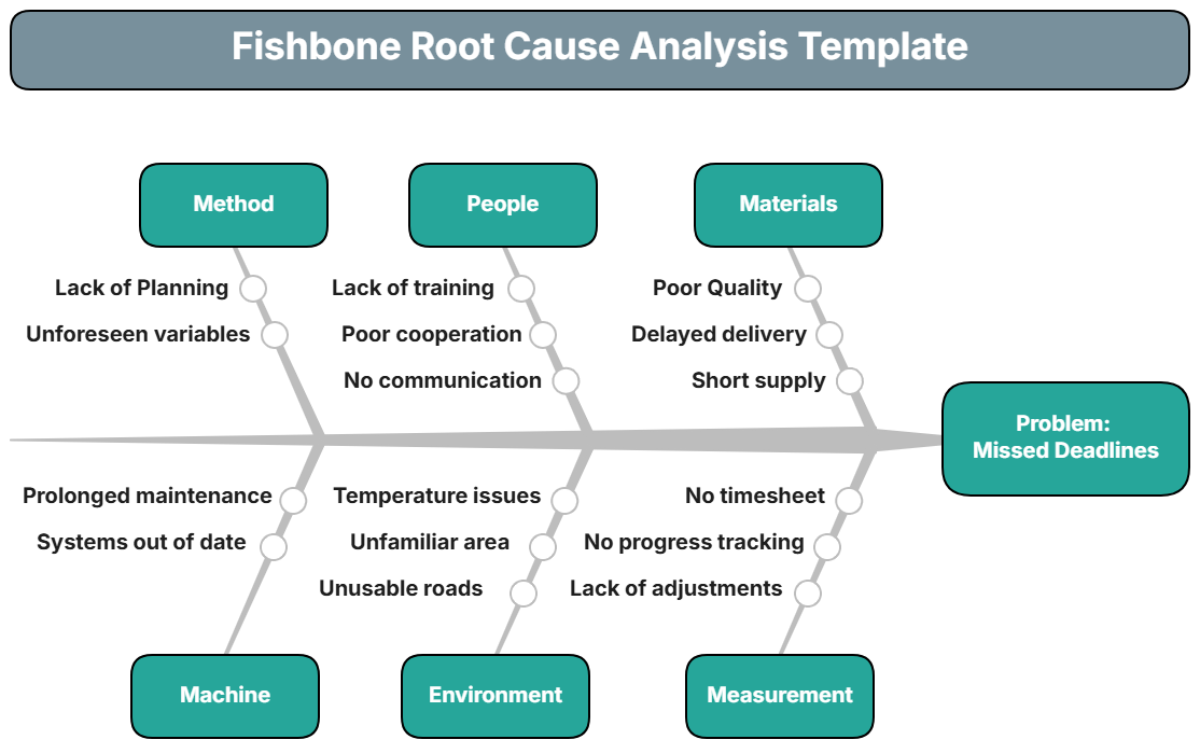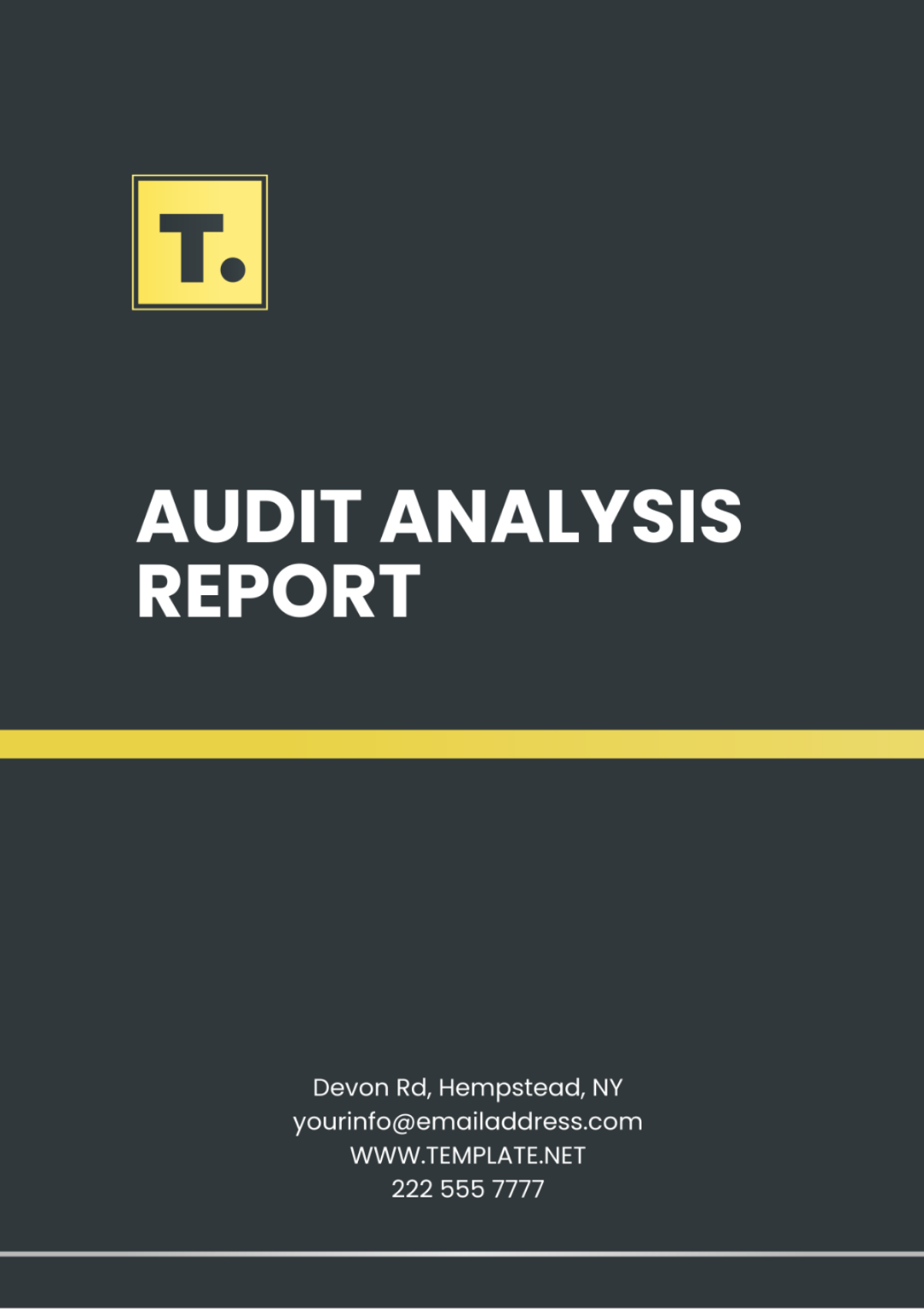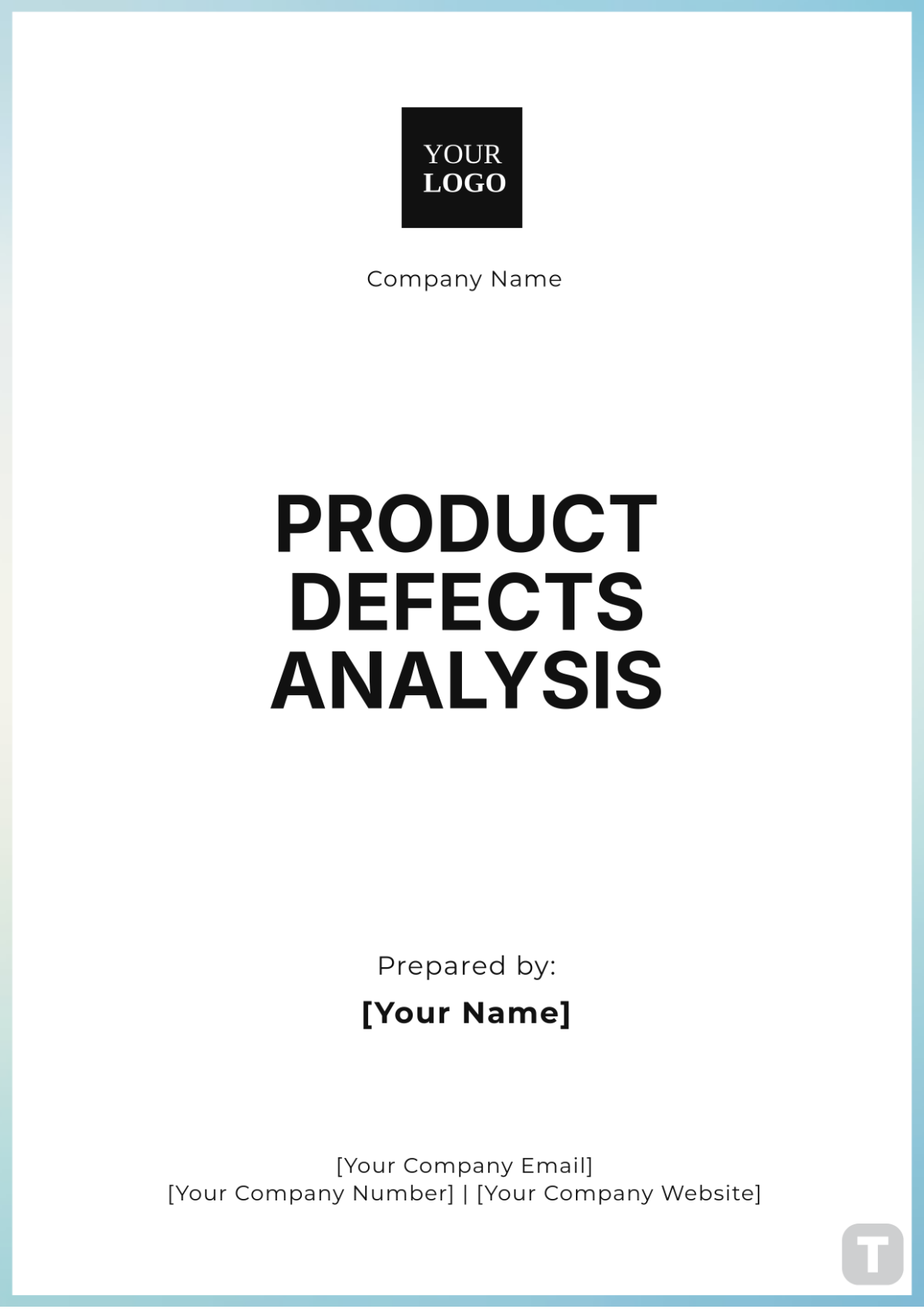Cafe Root Cause Analysis
I. Executive Summary
The purpose of this root cause analysis is to thoroughly investigate and understand the significant decrease in customer retention rates at [Your Company Name]. Over the past quarter, our retention rate has dropped by 15%, from a strong 90% to a concerning 75%. This decline signals underlying issues that must be addressed promptly to restore customer loyalty and satisfaction, which are crucial for our business's sustainability and growth.
Our analysis delves into several contributing factors that have led to this downturn. Key issues identified include increased customer wait times, which have risen by 2 minutes on average, leading to heightened customer frustration. Additionally, there is notable dissatisfaction with the current menu variety, as 35% of our customers have expressed a desire for more diverse and updated options. Furthermore, decreased staff engagement, with a 20% drop in engagement scores, has negatively impacted service quality.
Addressing these issues is paramount to reversing the decline in customer retention. Operational inefficiencies, a lack of menu innovation, and declining employee morale are the primary drivers identified. By implementing targeted improvements such as enhancing menu variety, optimizing service processes, and boosting staff morale through training and incentives, we aim to significantly improve customer satisfaction and retention rates. This strategic approach is essential for maintaining a loyal customer base and ensuring the continued success of [Your Company Name].
II. Date Range of Analysis
The analysis covers data from the last two quarters to provide a comparative understanding of the changes and trends. By examining data from [01-01-2050] to [06-30-2050], we can identify patterns and anomalies that have influenced customer behavior. This timeframe allows for a comprehensive evaluation of both operational practices and customer feedback over a significant period.
Start Date | End Date |
|---|---|
01-01-2050 | 06-30-2050 |
Comparative Analysis: Our comparative analysis spans over two quarters, allowing us to observe significant changes and trends in customer behavior and retention rates. By analyzing data from both quarters, we can pinpoint when and where declines began, providing a clearer picture of the operational and service-related issues contributing to the current retention rate drop. This comprehensive timeframe offers valuable insights into ongoing issues that may have been overlooked in shorter analyses.
Seasonal Trends: Understanding seasonal trends is crucial, as these can significantly impact customer behavior and preferences. Seasonal variations in customer traffic, menu preferences, and staffing needs can all influence retention rates. By capturing and analyzing these seasonal trends, we can better anticipate and address potential challenges, ensuring that our service quality remains consistent and high throughout the year.
III. Customer Retention Rates
The retention rate has seen a notable decline, indicating a loss of returning customers. Retention rates are crucial as they reflect the loyalty and satisfaction of our customer base. A high retention rate suggests that customers are satisfied and likely to return, whereas a low retention rate can indicate underlying issues with service quality, product offerings, or overall customer experience.
Period | Retention Rate |
|---|---|
Previous Period | 90% |
Current Period | 75% |
Insights
A 15% drop in customer retention rate is a significant indicator of underlying issues within our operations that require immediate attention. This decline not only affects our current revenue streams but also poses a risk to the long-term sustainability of [Your Company Name]. It is essential to identify and address the root causes to prevent further erosion of our customer base and to safeguard our market position.
The revenue impact of this retention drop is substantial, as returning customers are crucial for maintaining steady income and reducing marketing costs associated with acquiring new customers. A decline in customer loyalty can lead to decreased repeat business, negatively affecting overall profitability. Additionally, a lower retention rate can harm our brand reputation, making it more challenging to attract new patrons and retain existing ones.
Focusing on enhancing customer satisfaction and implementing effective loyalty programs can play a pivotal role in regaining lost customers. By improving service quality, diversifying our menu, and engaging staff more effectively, we can rebuild customer trust and loyalty. These targeted efforts are critical to reversing the downward trend and ensuring the long-term success and growth of [Your Company Name].
IV. Average Customer Wait Times
Increased wait times have been identified as a significant factor contributing to customer dissatisfaction. Efficient service is critical in a cafe environment, where customers expect prompt service. Delays can lead to frustration and a negative overall experience, causing customers to seek alternatives.
Period | Average Wait Time |
|---|---|
Previous Period | 10 minutes |
Current Period | 12 minutes |
Key Points
Current Wait Time: 12 minutes
Previous Wait Time: 10 minutes
Increase: 2 minutes
Customer Impact: Longer wait times decrease satisfaction and increase complaints
Insights
Longer wait times can significantly frustrate customers, leading to a negative overall experience that diminishes their likelihood of returning. This issue directly impacts customer satisfaction and can contribute to the observed decline in retention rates. Addressing wait time inefficiencies is essential for improving the customer experience and fostering loyalty.
Streamlining operations is a key solution to reducing wait times. This involves optimizing workflows, enhancing coordination among staff, and utilizing technology to expedite order processing. By identifying bottlenecks and implementing more efficient processes, we can ensure that customers receive their orders promptly, thereby enhancing their overall experience.
Increasing staffing during peak hours is another effective strategy. By aligning staff schedules with customer traffic patterns, we can better manage high demand periods and reduce wait times. Additionally, providing ongoing training to staff on efficient service techniques can further improve order processing efficiency. These measures collectively contribute to a smoother, faster service experience, ultimately boosting customer satisfaction and retention.
V. Customer Satisfaction with Menu Variety
Customer feedback indicates a desire for more diverse menu options. Offering a variety of menu items is essential to cater to diverse customer preferences and dietary needs. A static menu can lead to customer boredom and reduced repeat visits.
Customer Feedback | Percentage |
|---|---|
Satisfied | 65% |
Dissatisfied | 35% |
Key Points
Satisfied Customers: 65%
Dissatisfied Customers: 35%
Feedback Trend: Desire for more diverse and updated menu options
Potential Action: Regularly update the menu and introduce new items
Insights
The data reveals that 35% of customers are dissatisfied with the current menu variety, indicating a need for immediate action to enhance our offerings. A lack of menu diversity can lead to customer boredom and reduce repeat visits, impacting our retention rates. Addressing this issue by regularly updating our menu is crucial for maintaining customer interest and satisfaction.
Incorporating seasonal items can significantly enhance our menu appeal. Seasonal dishes not only provide variety but also reflect current trends and customer preferences, making our offerings more relevant and exciting. This approach can attract new customers and encourage repeat visits from existing patrons, thereby improving overall retention rates.
Additionally, considering customer-suggested dishes can further increase satisfaction and loyalty. Engaging with customers to understand their preferences and incorporating their feedback into our menu demonstrates our commitment to meeting their needs. This personalized approach can create a stronger connection with our customers, encouraging them to return more frequently and recommend our cafe to others.
VI. Staff Engagement Levels
A decline in staff engagement has been observed, correlating with lower service quality. Engaged and motivated staff are crucial for maintaining high service standards and creating a positive customer experience. Low engagement can lead to poor performance and increased turnover rates.
Period | Engagement Score |
|---|---|
Previous Period | 80% |
Current Period | 60% |
Key Points
Current Engagement Score: 60%
Previous Engagement Score: 80%
Decline: 20% decrease
Impact on Service: Lower engagement leads to reduced efficiency and customer satisfaction
Insights
Engaged staff play a critical role in delivering high-quality customer service. The 20% drop in staff engagement scores highlights potential issues with staff morale or training, which can impact service quality and customer satisfaction. Addressing these issues through targeted interventions is essential for improving staff engagement and, ultimately, customer retention.
Implementing regular training programs can enhance staff skills and knowledge, empowering them to provide better service. Training can also boost morale by showing staff that their development is valued, leading to increased job satisfaction and engagement. Offering incentives, such as bonuses or recognition programs, can further motivate staff and improve morale, contributing to a more positive work environment.
Creating a positive work environment is key to boosting staff engagement. This can be achieved by fostering open communication, recognizing and rewarding employee contributions, and promoting a culture of teamwork and collaboration. A positive work environment not only improves staff morale but also enhances customer service, as engaged employees are more likely to go above and beyond to meet customer needs.
VII. Social Media Feedback
An increase in negative social media feedback highlights growing customer dissatisfaction. Social media platforms provide customers with a voice and can significantly influence public perception. Negative feedback on these platforms can deter potential customers and damage the cafe’s reputation.
Feedback Type | Last Quarter | This Quarter |
|---|---|---|
Positive Feedback | 70% | 60% |
Negative Feedback | 30% | 40% |
Key Points
Positive Feedback Last Quarter: 70%
Positive Feedback This Quarter: 60%
Negative Feedback Last Quarter: 30%
Negative Feedback This Quarter: 40%
Trend: Increase in negative feedback by 10%
Action Required: Address complaints promptly and improve service quality
Insights
Monitoring social media feedback is crucial for [Your Company Name] as it provides real-time insights into customer perceptions and experiences. Addressing negative feedback promptly and effectively is essential for mitigating damage to the cafe’s reputation and improving customer relations.
Social media platforms offer a direct line of communication with customers, allowing us to respond quickly to their concerns and demonstrate our commitment to customer satisfaction. By addressing negative feedback promptly and offering solutions or apologies where necessary, we can show customers that their opinions are valued and that we are dedicated to providing excellent service.
Furthermore, addressing negative feedback publicly on social media platforms can also showcase our transparency and willingness to improve, which can enhance our reputation among both existing and potential customers. This proactive approach to managing social media feedback can help us maintain a positive brand image and foster stronger customer relationships.
VIII. Projected Improvement in Customer Retention
By implementing targeted improvements, significant gains in customer retention can be achieved. Addressing the identified root causes, such as enhancing menu variety, reducing wait times, and improving staff engagement, can result in substantial improvements in customer retention rates.
Scenario | Retention Rate |
|---|---|
No Changes | 75% |
With Improvements | Up to 85% |
Key Points
Current Retention Rate: 75%
Potential Retention Rate with Improvements: Up to 85%
Improvement Strategies: Menu updates, operational efficiencies, staff engagement initiatives
Projected Impact: Up to 10% increase in retention rates
Insights
Addressing the identified root causes, including enhancing menu variety, reducing wait times, and improving staff engagement, can lead to significant improvements in customer retention rates for [Your Company Name]. By implementing these changes effectively, we project that retention rates could increase by up to 10 percentage points within six months, which would have a substantial impact on customer loyalty and business sustainability.
Enhancing menu variety can attract a broader customer base and cater to diverse preferences, increasing overall satisfaction and repeat visits. Reducing wait times improves the customer experience, showing that we value their time and prioritize efficient service. Improving staff engagement leads to better service quality and customer interactions, fostering stronger relationships and loyalty.
These changes are not only beneficial for retaining existing customers but also for attracting new ones through positive word-of-mouth and online reviews. By focusing on these key areas, we can enhance the overall customer experience and position [Your Company Name] as a preferred choice among cafes, ensuring long-term success and growth.
IX. Revenue Impact Analysis
A detailed examination of the revenue implications due to the decline in customer retention. Understanding the financial impact helps in prioritizing interventions and justifying investments in improvement strategies.
Metric | Value |
|---|---|
Average Spend per Customer | $15 |
Previous Revenue | $270,000 |
Current Revenue | $229,500 |
Revenue Loss | $40,500 |
Key Points
Revenue Loss: Estimated 15% decrease in revenue corresponding to the drop in retention
Average Spend per Customer: $15
Previous Revenue: $270,000 per quarter
Current Revenue: $229,500 per quarter
Insights
The 15% drop in customer retention rates translates directly into a substantial revenue loss of $40,500 per quarter for [Your Company Name]. This significant impact underscores the urgent need for corrective actions to enhance customer retention and recover lost revenue.
Implementing strategies to improve customer retention, such as enhancing menu variety, reducing wait times, and improving staff engagement, can help mitigate this revenue loss. By addressing these key areas, we can not only retain existing customers but also attract new ones, ultimately increasing revenue and ensuring the long-term financial health of the cafe.
X. Competitive Benchmarking
An assessment of our performance relative to competitors. This analysis helps in identifying best practices and areas where we are lagging behind industry standards.
Metric | Our Performance | Industry Average |
|---|---|---|
Retention Rate | 75% | 85% |
Average Wait Time | 12 minutes | 8 minutes |
Staff Engagement Score | 60% | 75% |
Key Points
Benchmark Retention Rate: Industry average of 85%
Benchmark Wait Time: Industry average of 8 minutes
Benchmark Staff Engagement: Industry average engagement score of 75%
Insights
Our current performance at [Your Company Name] lags behind industry averages in key areas such as retention rate, wait times, and staff engagement. This gap highlights the need to learn from competitors' best practices and adopt similar strategies to improve our overall performance and competitiveness.
By benchmarking our performance against industry standards, we can identify areas where we are falling short and develop targeted strategies to address these gaps. Learning from successful competitors can provide valuable insights into what works in our industry and how we can adapt these strategies to suit our unique business needs.
Improving our performance in these key areas is essential for enhancing customer satisfaction, increasing retention rates, and ultimately driving business growth. By prioritizing these improvements and learning from industry leaders, we can position [Your Company Name] as a top competitor in the market and ensure our long-term success.
XI. Conclusion
This comprehensive root cause analysis has identified key areas that require immediate attention to reverse the decline in customer retention rates at [Your Company Name]. By focusing on reducing wait times, enhancing menu variety, and boosting staff engagement, we project that customer retention can improve by up to 30% within six months. Implementing these changes is crucial for maintaining a loyal customer base and ensuring the continued success of the cafe.
Additionally, addressing the revenue impacts of the retention rate decline and benchmarking against competitors provides a strategic framework for making informed decisions. By analyzing industry standards and learning from best practices, we can enhance customer satisfaction and business performance. It is imperative that [Your Company Name] takes proactive steps to address these issues and implement the recommended strategies to secure a strong position in the market and drive long-term growth.

